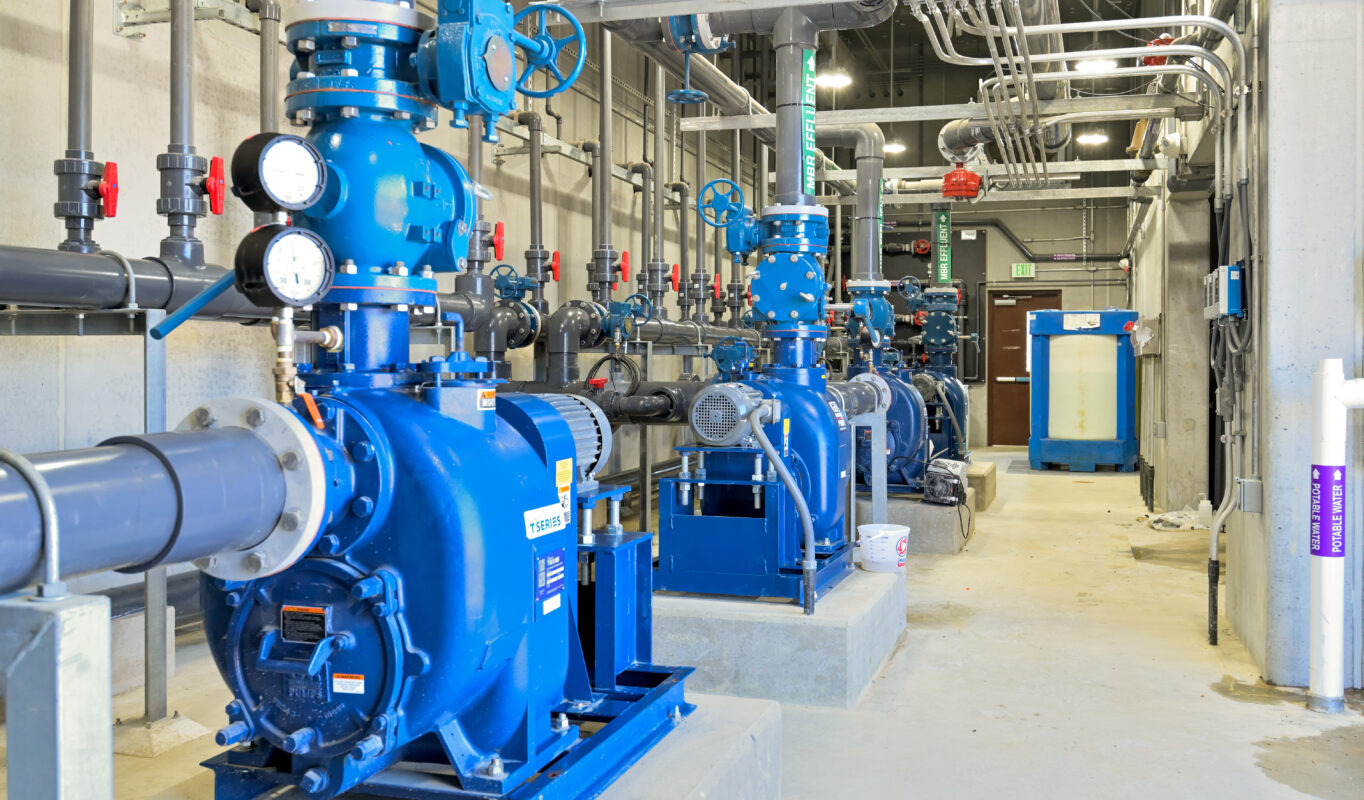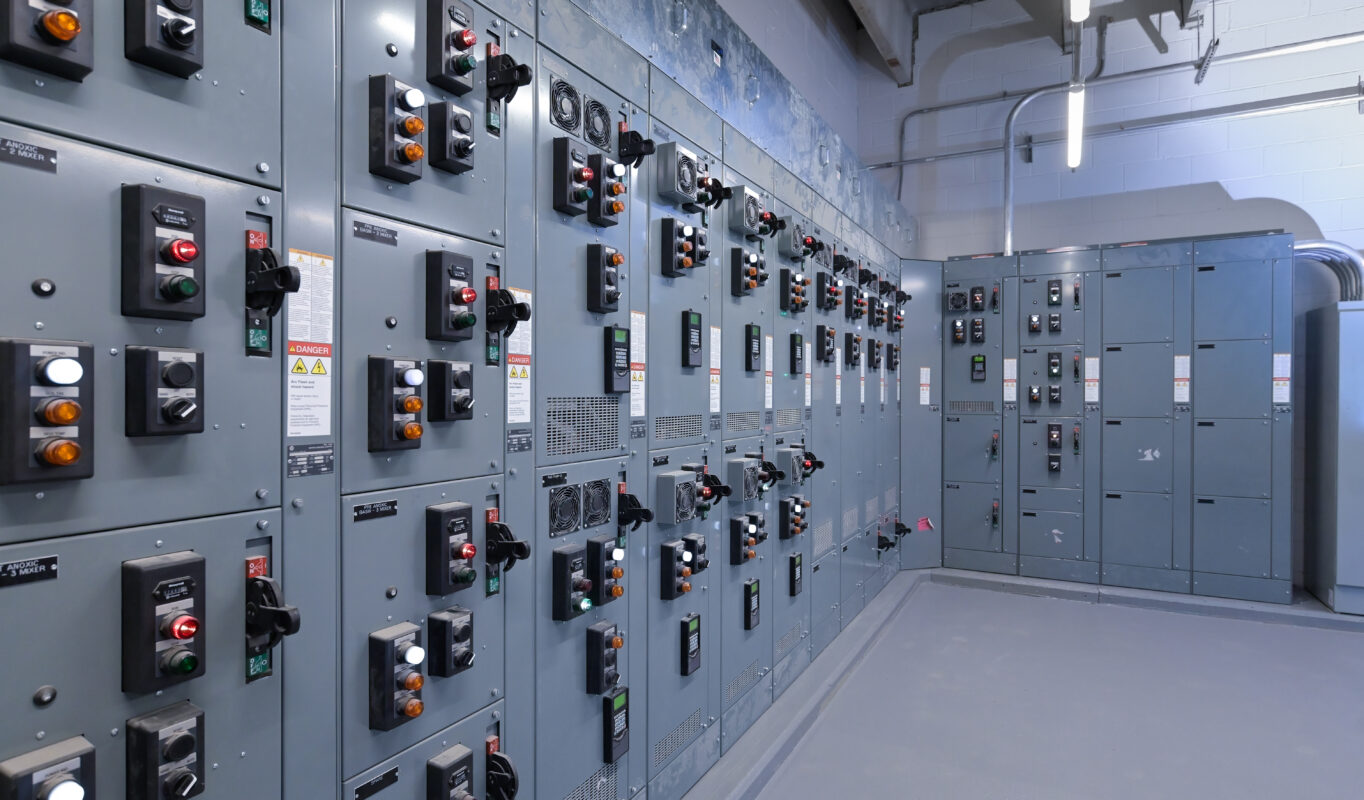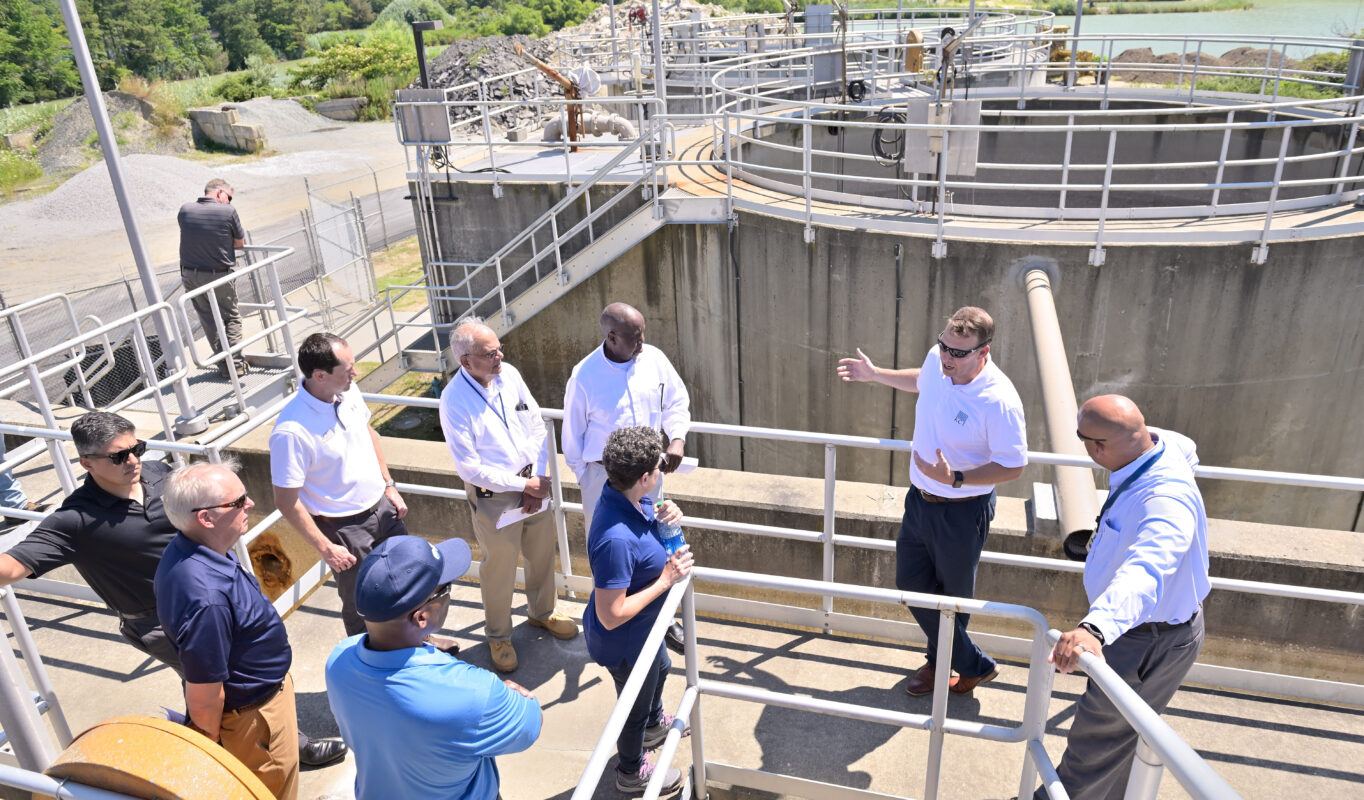As stewards of a sustainable future, it is important to recognize that access to clean and safe water is a necessity.
The Chesapeake Bay Total Maximum Daily Load (TMDL) is a regulatory framework and pollution control mechanism that was implemented to address water quality issues in the Chesapeake Bay and its watershed. Parameters were put in place to define the maximum amount of pollutant that a water body can receive while still meeting quality standards. As part of an effort to continually improve water quality throughout the state, the Maryland Department of the Environment (MDE) issued a discharge permit that lowered the acceptable levels of nitrogen and phosphorous in treated water. In addition to the stricter limits, set in accordance with pre-established Chesapeake Bay TMDL requirements, the permit required revisions to discharge points that were connected to water sources. In order to meet these new guidelines, the Eastern Correctional Institution Wastewater Treatment Plant (ECI WWTP) in Westover, Maryland, needed a complete overhaul of its current system.
The WWTP is owned by the Department of Public Safety and Correctional Service (DPSCS) and operated by Maryland Environmental Service (MES). KCI was contracted to provide full project delivery services for the $23.9 million upgrade. Utilizing a collaborative method known as Construction Manager At-Risk, our engineers began a partnership with contractors while also assembling a design and construction administration team. Through this method, a firm is brought on as a consultant to the owner during the design phase but shifts to act as a general contractor in the construction phase, allowing for budget expectations to be set and maintained throughout the entire timeline. With KCI serving as the owner’s agent and engineer of record, this innovative approach allowed MES to contract a guaranteed maximum price at the onset of the project and secure funding to execute the upgrades.
 To meet the new MDE standards, the ECI WWTP was in need of an innovative solution to drive the levels of nutrients down.
To meet the new MDE standards, the ECI WWTP was in need of an innovative solution to drive the levels of nutrients down.The new regulations were set by fixed loading limits for nutrients, which reduced the acceptable concentrations of chemicals in the water supply well below the widely accepted enhanced nutrient removal (ENR) standard. Rather than the 3.0 milligrams per liter (mg/l) of nitrogen and 0.3 mg/l of phosphorous that ENR allowed, the wastewater treatment plant would now need to drop those levels down to 1.26 mg/l and 0.13 mg/l, respectively. In addition, it was required that waste streams from the adjacent drinking water purification system combine with effluent from the treatment plant, marrying the flows into a singular disposal point.
As the project team researched best practices for this new goal, they discovered that several treatment facilities had recorded lowered nutrient levels for either nitrogen or phosphorus, but not both simultaneously. Using existing technologies, our team developed a multi-step treatment process that allows plant operators to reduce each nutrient concentration down to the lowest levels possible while still producing treated outflow during flexible seasonal operations. The primary biological treatment used a four-stage sequence, known as a Bardenpho process, in conjunction with membrane filtration that is capable of meeting ENR levels. The filtered water is further treated by denitrification filters and a ballasted flocculation process to reduce nitrogen and phosphorus beyond ENR levels to the extremely low permit requirements. A complete replacement of the electrical system, as well as instrumentation and control features that would allow operators to monitor performance in real time, were also designed to support the more complex hybrid treatment process.
 A new control panel gave operators the ability to create automated responses to certain inputs and environments.
A new control panel gave operators the ability to create automated responses to certain inputs and environments.Incorporating various sustainable design elements, the new system was planned to make use of ultraviolet light disinfection while maximizing the utilization of existing infrastructure. A water recycling system was developed to provide a reliable source of reclaimed water for washdown purposes and to supply the nearby cogeneration power facility with cooling water. These systems help reduce potable water use and groundwater withdraw rates in the area, protecting the surrounding environment and ultimately the Chesapeake Bay.
In addition to technical constraints associated with the discharge limits, the project faced site, schedule, and budget challenges. MES selected the KCI design team based on our technical ability to solve the treatment process challenge, but also trusted that we would help them navigate the various logistical, scheduling, operations, and budgeting issues along the way.
“Our estimates were used to adjust construction project phasing and total scope decisions, and consequently, the facility was successfully upgraded multiple times on schedule while operation of the existing system was maintained.”
– Daniel String, PE, Practice Leader
 Through the entire project timeline, KCI served as the liaison between contractors and MES to ensure both design and construction phases went smoothly.
Through the entire project timeline, KCI served as the liaison between contractors and MES to ensure both design and construction phases went smoothly.Now one of the top-performing wastewater treatment plants in the country, the newly upgraded ECI WWTP proves that water treatment systems can reach extremely low levels of nitrogen and phosphorus at the same time, an outcome that had not previously been possible. As a case study for future TMDL decisions as well as a testing facility for the unique combinations of treatment processes, this project provides a real-life cost/benefit analysis opportunity to allow environmental agencies to continue to provide our population with sanitary water.
